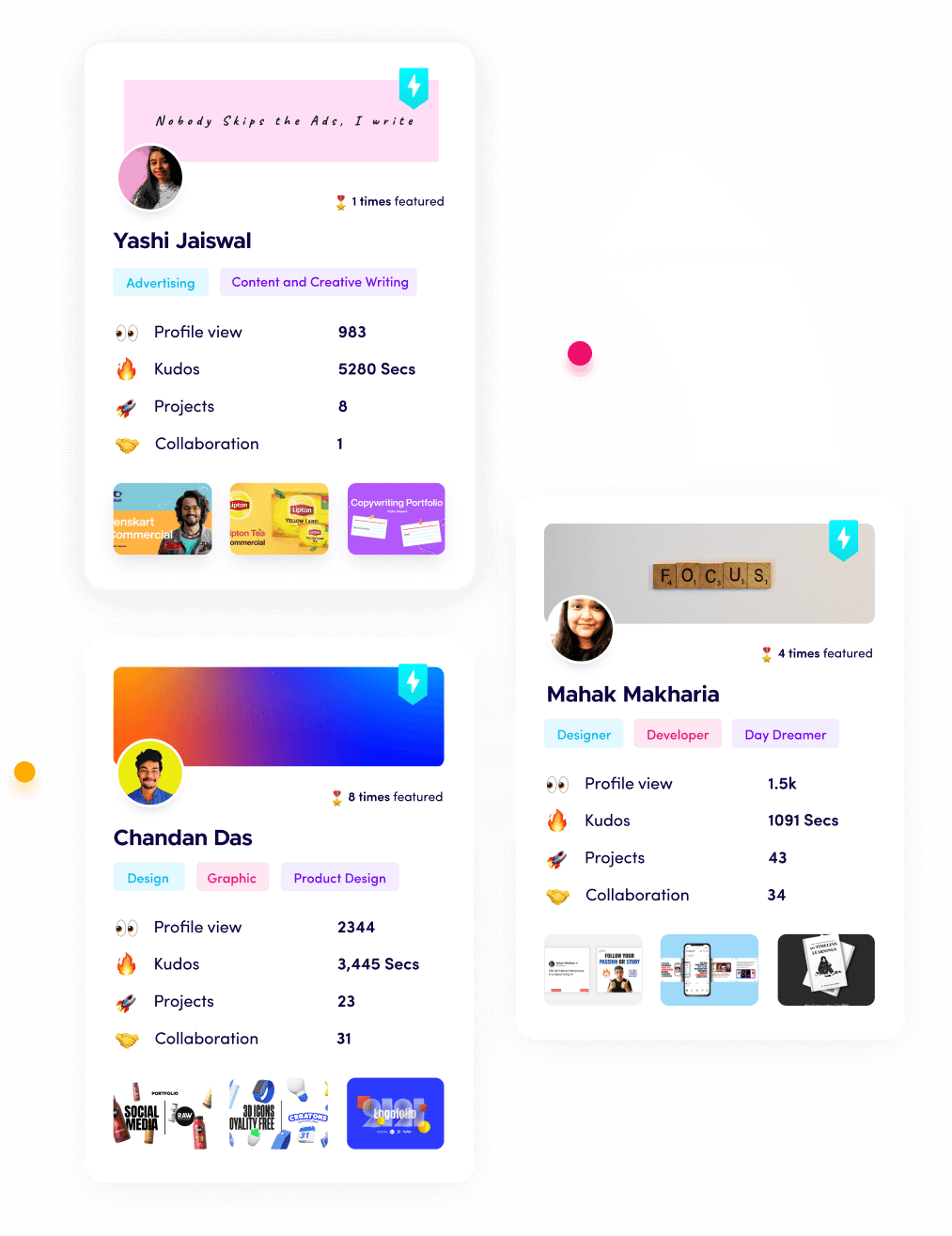Why Recruiters are Looking for Generative AI Testing Experience in Portfolios

Team Fueler
05 May, 2025

In the fast-growing world of artificial intelligence (AI), one area that has garnered most attention recently is Generative AI. Generative AI creates new data and content, including text, images, audio, and video depending on existing data patterns. It generates new and unique outputs by mimicking human creativity and innovation. Generative AI finds application across various fields. It automates creative processes, enhances efficiency, and provides tailored solutions.
Generative AI is fundamentally changes the way the products are designed, developed, and delivered. As more and more industries use generative AI, it becomes necessary for recruiters and hiring managers to focus on candidates having a generative AI portfolio.
Hence, a growing number of recruiters are looking for potential candidates with experience in testing generative AI systems. There is a significant shift in recruitment process today that marks a pivotal transformation in the skill sets required for developers, QA engineers, product managers, and data scientists. Irrespective of the position, recruitment looks for generative AI and generative AI testing experience in their portfolios.
But why exactly did this situation arise? Why is generative AI testing experience so valuable?
In this article, we will look for these answers. For that, we need to begin with brief information related to generative AI followed by its importance in testing and how professionals can make use of generative AI in software testing to get maximum returns.
The Rise of Generative AI in Real-World Applications
Generative AI is a branch of AI that uses algorithms to produce new and original content, such as images, text, code, music, or video. It can be a powerful tool for creative expression, innovation, and problem-solving.
Businesses in healthcare, finance, retail, media, and software developments are building their entire features powered by large language models (LLMs) and diffusion models. These businesses integrate generative AI into products for marketing, customer support, code assistance, creative design, and automation with the help of tools such as ChatGPT, GitHub Copilot, Stable Diffusion, etc.
This surge in the usage of generative AI has not only created heavy demand for AI engineers but also for other professionals who can ensure the accuracy, reliability, and safety of these systems. Therefore, the use of generative AI in software testing and the experience in the field guarantees a lucrative career for software QA professionals.
What Sets Generative AI Testing Apart?
Traditional software testing has been largely deterministic. There is a set input that produces predictable output. On the contrary, generative AI systems are probabilistic. The same set of input can yield different results each time due to underlying model sampling techniques. This non deterministic approach in generative AI testing helps to thoroughly test the application and renders traditional QA strategies insufficient.
The following are some of the factors that set generative AI testing apart from other approaches:
1. Non-deterministic Output
Generative AI produces different output for the same set of input. Thus, testers not only evaluate whether the output is “correct” but also whether the result is “acceptable”, “coherent”, and “relevant”. This helps testers to determine the relevance of the system or application in a broader sense.
2. Subjective Quality Metrics
In traditional testing, binary correctness of the output is focused. In generative AI testing, outputs are evaluated on subjective criteria such as creativity, coherence, tone, and appropriateness.
3. Ethical and Bias Considerations
Ethical and bias considerations are given in generative AI testing as the model is evaluated to test that it doesn’t produce offensive, biased, and legally risky content. When AI models in the healthcare domain are tested, due consideration is given to the generated output to ensure it doesn’t risk patients’ lives.
4. Robustness and Prompt Sensitivity
Testing of Generative AI models is based on prompts. With a slight modification in prompts, the model behaves unpredictably. Testers can make use of this behavior and simulate a variety of user inputs and edge cases to evaluate robustness of the application and its resilience.
5. Evaluation Framework Complexity
Automated evaluation of models is still in its infancy. Though there are various NLP metrics such as BLEU scores, ROUGUE, etc. they are often inadequate. Practices such as human-in-the-loop and reinforcement learning from human feedback (RLHF) are becoming the latest norms.
Why Recruiters Value the Generative AI Testing Skillset?
Generative AI testing is clearly different from traditional testing. While traditional testing is objective and deterministic, generative AI testing is subjective and non-deterministic giving wide scope for testers to cover the application in its entirety. Because of its distinguishing features and increasing use by businesses across various domains, the recruiters nowadays pay more attention to generative AI testing skillset when seeking testing professionals. Here are some of the reasons why recruiters value the generative AI testing skillset:
1. Increasing Adoption by Enterprises
More and more businesses are adopting generative AI approaches in recent years. Testing using generative AI approaches ensures the application is not only “Correct” but also “Appropriate”, “Coherent”, and “Relevant”. As generative AI testing is adopted by most enterprises, there is a growing need for professionals who can perform the generative AI testing and evaluate the model.
2. Risk Mitigation
Robust generative AI testing helps to mitigate risks that arise due to incorrect or offensive output. The risks include PR crises, legal challenges, and user attrition.
3. Product Readiness
Enterprises want to roll out their products faster without compromising the quality. Professionals knowledgeable in generative AI testing and aware of model testing bridge the gap between prototype and production this evaluating product readiness.
4. Demonstrated Innovation and Adaptability
The fact that any candidate has a generative AI testing experience indicates that he/she is adaptable, forward-thinking, and ready to work with cutting-edge technology. Obviously, recruiters will prefer such candidates.
5. Cross-Functional Collaboration
Professionals involved in testing generative AI often closely work with data scientists, engineers, designers, and legal teams. They are seen as valuable collaborators.
With generative AI testers providing such high-level skills and experience, it is not a surprise that recruiters prefer generative AI testing experience when seeking testing professionals.
What Recruiters Look for in a Generative AI Testing Portfolio
Though recruiters prefer professionals with generative AI testing experience, candidates also must showcase more than just the familiarity with generative AI testing. To stand out in the market, they have to demonstrate experience. The key elements recruiters look for in candidates with Generative AI testing portfolio are:
1. Project-Based Demonstrations
Demonstrate specific projects where the candidates have tested generative AI systems. Chatbots, LLM-based applications, code generation tools, or image creation pipelines are some of the examples of projects.
2. Prompt Engineering Skills
Recruiters seek deep understanding of prompts that affect output quality from the candidates. Candidate portfolio should contain examples of prompt optimization, prompt chaining, and prompt testing frameworks.
3. Evaluation Strategy
The tools and frameworks used to evaluate outputs including automated metrics and human evaluation strategies are the most important additions to the portfolio.
4. Bias and Safety Testing
Recruiters also seek candidates who have tested and addressed harmful outputs, bias in generation, or offensive language. Especially for regulated industries such as healthcare, the skill for bias and safety testing is essential.
5. Tooling and Automation
Candidates should have experience with generative AI automation testing tools such as testRigor, LangChain, MLflow, or custom scripts that automate generation and evaluation of outputs. Recruiters are impressed by reusable, scalable solutions.
6. Documentation and Reporting
Documentation and reporting are also important skills for generative AI testing professionals. Good testing professionals always document what they have done.
With this skillset that recruiters look for in tester’s portfolios, here are some tips for testing professionals to showcase their skills.
- Choose Relevant Projects: Select the best project that match the role and the company you are applying for. Think how your generative AI projects can align with the goals, challenges, and values of the organization,
- Prepare Your Samples: Prepare samples of generative AI output. The samples should clearly demonstrate diversity, quality, and originality of the works you have done. Prepare a clear and concise explanation about how the sample was prepared, tools and techniques used, and what challenges and limitations you faced.
- Tell a Story: Tell a story that connects your generative AI projects to your personal and professional journey. Highlight your motivation, passion, and curiosity for generative AI testing. Mention the impact and value of generative AI projects, both for others and yourself.
- Demonstrate Your Process: Demonstrate in detail the process you adopted for developing and testing generative AI projects. Highlight the entire process and how you applied scientific method, design thinking, or other frameworks to define, prototype, explore, and evaluate the generative AI solutions. You should also mention any refinements you made.
- Showcase Your Skills: Last, but not the least, showcase your skills and knowledge in generative AI testing. Explain the main concepts, methods and models of generative AI. Also explain the testing approach, pros and cons, and so on. You should also be able to show your proficiency in using various generative AI tools and also generative AI testing tools such as testRigor. Make use of appropriate resources like code snippets, links, etc. to showcase your skills.
The Role of QA Engineers and Test Automation in Generative AI
With the QA industry modernizing itself with generative AI testing approaches, QA engineers as well as test automation as a whole have to adapt and become indispensable in generative AI workflows and solidify their foundation. Here’s how they can do it:
- Test Automation Tools: Test automation platforms like testRigor incorporate features for generative AI model testing, offering ways to structure test cases even in AI-driven flows.
- Scenario Simulation: QA engineers simulate realistic usage patterns and edge cases to test generative outputs at scale.
- Continuous Monitoring: To ensure long-term quality control, setting up observability and monitoring for outputs in production is required.
How to Gain Generative AI Testing Experience
Here are the steps a testing professional can follow if he/she is looking to add generative AI testing skills to their portfolio.
- Build Small Projects: Create some small projects preferably with open-source models such as GPT-J, LLama2, or OpenAI’s APIs and create simple applications like chatbots, summarizers etc.
- Document Outputs: Document all the output and keep track of how different prompts yield different results. Create an evaluation framework for subjective quality.
- Use Public Datasets: Use real-world data like customer reviews, news articles, or blog posts to test models and simulate realistic usage. To ensure smooth access to these sources, consider using fast residential proxies, which help avoid IP blocks while gathering insights.
- Collaborate with Developers and Data Scientists: This collaboration can help you expose yourself to real workflows and increase your impact.
- Contribute to Open-Source Testing Frameworks: Contributing to open-source testing frameworks is a great starting point.
The Future of Generative AI Testing Careers
As AI continues to grow, testing roles will diversify further. With this, there will be more opportunities for testing professionals with generative AI testing skillset. Some emerging trends in generative AI testing roles are:
- AI Quality Analysts: Entirely focused on the output quality and behavior of AI systems.
- AI Safety Testers: Specialists in red-teaming and ethical evaluations of models.
- Prompt Testers/Designers: Skilled in developing and validating prompt strategies for reliability and scalability.
- Model Evaluation Engineers: Assess model updates and fine-tuning efficacy.
All these roles will make the ability to understand, test, and validate generative AI systems indispensable.
Conclusion
Generative AI is a branch of AI that is not just a trend. It is a force reshaping and transforming the industries and professions. With more and more organizations embracing the generative AI models, there is a growing need for rigorous, thoughtful, and innovative testing approaches,
Recruiters thus have to look beyond the traditional testing experience and seek out professionals who can tackle the unique challenges of generative AI systems. Simply including generative AI testing in one’s portfolio is not enough. To make oneself more marketable, developing the expertise and demonstrating the skills in generative AI testing is an important strategic move.
What is Fueler Portfolio?
Fueler is a career portfolio platform that helps companies find the best talents for their organization based on their proof of work.
You can create your portfolio on Fueler, thousands of freelancers around the world use Fueler to create their professional-looking portfolios and become financially independent. Discover inspiration for your portfolio
Sign up for free on Fueler or get in touch to learn more.


